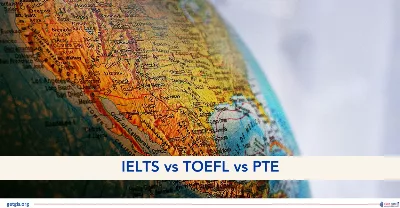How to Get Canada PR With Low CRS Score in 2025?
Updated On
-
Copy link
Low on CRS Score? Learn how to get Canada PR with a low CRS score in 2025. Explore alternative Express Entry Canada PR pathways from PNP, sponsorships, to Pilot programs for applicants with low CRS scores.
Limited-time offer : Access a free 10-Day IELTS study plan curated for you

Table of Contents
- How to Secure Canada PR With Low CRS Score in 2025?
- 1. Provincial Nominee Program (PNP)
- How to Apply for a PNP in Canada in 2025?
- 2. Atlantic Immigration Program (AIP)
- 3. Family Sponsorship
- 4. Immigration Pilots
- Targeted Express Entry Draws Are a New Trend in 2025
- Explore Your Canada PR Immigration Options With GeGIS
Worried about how to get Canada PR with a low CRS Score in 2025? As Canada continues to be a top destination for immigrants looking for better career prospects, a high standard of living and a multicultural society, the Express Entry system is one of the most popular ways to obtain Canada PR in 2025.
However, many applicants struggle with low CRS scores, often assuming that PR is out of their reach. The good news? There are multiple pathways to secure Canada PR, even with low CRS scores. Let’s delve into proven strategies, real draw trends and viable immigration streams that can help you obtain Canadian PR in 2025 with a low CRS score even below 400.
How to Secure Canada PR With Low CRS Score in 2025?
A low Comprehensive Ranking System (CRS) score and ineligibility for category-based Express Entry draws typically mean you won't receive an Invitation to Apply (ITA) for permanent residency (PR) through the standard Express Entry route. However, alternative immigration options remain accessible, which include:
|
Program |
Ideal for |
Key Criteria |
|
Provincial Nominee Program (PNP) |
Individuals wanting to settle in specific provinces or territories (excluding Quebec and Nunavut) |
Varies by province; over 80 different streams available |
|
Atlantic Immigration Program (AIP) |
Those with job offers from designated employers in Atlantic Canada |
Job offer required; work experience or education; language skills |
|
Spousal Sponsorship |
Individuals in a genuine relationship with a Canadian citizen or PR |
Must be legally married or in a common-law/conjugal relationship |
|
Dependent Child Sponsorship |
Dependent children of Canadian citizens or PRs |
Must meet IRCC’s definition of a dependent child |
|
Parents and Grandparents Program (PGP) |
Parents and grandparents of Canadian citizens or PRs |
Must have a sponsor and be selected through a lottery |
|
Immigration Pilots |
Individuals meeting unique eligibility under specific pilot programs |
Varies by pilot program |
1. Provincial Nominee Program (PNP)
If your CRS score is low and you're not eligible through family or pilot programs, the Provincial Nominee Program (PNP) pathway could be your best route to Canada PR. Pnps are operated by each province and territory (except Quebec Nunavut) which are designed to address specific labour market needs. The 2 types of PNPs include:
|
Type |
Eligibility |
Outcome |
PR Processing Time |
|
Base PNP (Non Express Entry Pathway) |
Must meet provincial criteria |
Nomination certificate |
Around 12 months |
|
Enhanced PNP (Express Entry Route) |
Must meet PNP criteria + have an Express Entry profile |
600 extra CRS points in Express Entry |
Around 6 months |
- Base PNPs require direct application to the province and once nominated you can apply for PR through IRCC
- Enhanced PNPs are linked with the federal Express Entry system. If you are nominated for any PNP, you will receive 600 CRS points, which significantly increases your chances of getting an ITA in future Express Entry draws.
*Some provinces offer both base and enhanced PNP pathways, while others focus on only one type.
Key PNPs With Low CRS Score Requirements
|
PNP Stream |
Minimum CRS (recent) |
Highlights |
|
Saskatchewan (SINP) – Express Entry |
65 points (Saskatchewan score, not CRS) |
Based on occupation in demand |
|
Alberta Advantage Immigration Program (AAIP) |
As low as 300 |
Nominations from Express Entry pool |
|
Ontario Human Capital Priorities |
350+ (with targeted tech or healthcare roles) |
Tech draws with lower CRS |
|
Manitoba Skilled Workers Stream |
375 (EOI points, not CRS) |
Prior connection to province required |
|
Nova Scotia Labour Market Priorities |
No set score |
Targeted draws like French speakers, nurses |
*Many PNPs prioritise French speakers, nurses, tech professionals, and candidates with relatives in the province
|
Also Read: |
||
How to Apply for a PNP in Canada in 2025?
The process to apply for Canada PR through PNP is simple and has only 2 steps namely:
Step 1: Check Your Eligibility
With over 80 streams across provinces offering PNP pathways, ensuring to check with the eligibility requirements, which could vary. The general eligibility requirements include:
- Age
- Educational qualifications
- Language proficiency
- Job offer in the province
- Skilled Occupation
- Licensing or certification
- Proof of settlement funds
- Ties to the province
- Relevant work experience
Step 2: Application Process
Some PNP streams allow direct application at any time (especially those requiring a job offer), while others are invitation based only.
- For Active streams: Requires actions like submitting an Expression of Interest (EOI) or Letter of Interest (LOI) and joining a candidate pool. Provinces may score profiles and conduct draws to invite top ranking candidates
- For Passive streams: Require no action. As provinces search the federal Express Entry pool for suitable candidates and issue notification or invitations accordingly.
2. Atlantic Immigration Program (AIP)
The AIP allows killed workers with job offers in Atlantic Canada to apply for permanent residency. Eligible provinces under the Atlantic Immigration Program (AIP) include:
- New Brunswick
- Newfoundland and Labrador
- Nova Scotia
- Prince Edward Island (PEI)
The eligibility requirements for AIP immigration include:
- Valid job offer from a Designated employer
- Proof of work experience and education (academic transcripts)
- Language proficiency test scores
- Endorsement certificate from the province
*AIP applicants may also be eligible for a two year work permit while their PR application is being processed.
3. Family Sponsorship
There are three types of family sponsorship programs in Canada, namely:
a. Spousal Sponsorship
If you are in a genuine relationship with a Canadian citizen or PR holder (spouse, common law or conjugal partner), then they can sponsor you for PR.
It is important to note that marriages of convenience are considered immigration fraud and can lead to application refusal or revocation of permanent residency later.
Read Next: Canada Spouse Visa in 2025
b. Dependent Child Sponsorship
Children may be eligible Canada PR sponsorship if
- They are under 22 years old and unmarried.
- If 22 or older, they must have been financially dependent on their parents before age 22 due to a physical or mental condition
*Dependent children of dependent children may also be eligible for Sponsorship
Explore all the details to Canada Family Visa 2025
c. Parents and Grandparents Program PGP
This program allows citizens or Canada PR holders to sponsor their parents or grandparents. However, parents and grandparents program (PGP) applicants must:
- Submit an interest to sponsor form
- Wait to be selected through a lottery system
The PGP has witnessed limited intake since 2020, as invitations shared from 2020 to 2024 were based on prior submissions.
Alternatively, you can also consider Canada Super Visa, which allows extended visits up to five years without gaining PR
Also Read: What is a Canada PR Visa for Parents and Grandparents and How to Apply?
4. Immigration Pilots
Canada also offers immigration pilot programs to address sector specific or regional specific requirements. The current active Federal Immigration Pilots 2025 include:
- Agri Food Pilot Program
- Francophone Community Immigration Pilot.
- Rural and Northern Immigration Pilot (RNIP)
The Canadian government has also announced plans for a new caretaker pilot program with more details regarding eligibility and process Pending to be released.
Pilot programs are temporary, but Can become a permanent pathway if successful (for example, AIP). To apply for immigration pilots in Canada you would need to:
- Ensure strict compliance with eligibility criteria
- Submit accurate complete application
- Keep a close watch for deadlines and program closures
Read Next: New Home Care Worker Immigration Pilots in 2025 Offer Canada PR on Arrival
Targeted Express Entry Draws Are a New Trend in 2025
Starting June 2023, IRCC introduced category based Express Entry Draws focusing on in demand occupations and skills based immigration regardless of the CRS scores. The categories being considered for Express Entry draws in 2025 include:
- Healthcare
- STEM (Science, Tech, Engineering, Mathematics)
- Skilled Trades
- Transport
- Agriculture and Agri Food
- French Language Proficiency
CRS Scores Insights in Express Entry Draws in 2025
|
Date |
Draw Type |
CRS Cut-off |
Invitations |
|
June 20, 2025 |
French-Language Skills |
390 |
3,500 |
|
May 29, 2025 |
Healthcare Occupations |
445 |
2,100 |
|
April 17, 2025 |
Provincial Nominee |
698 |
1,400 |
|
March 12, 2025 |
STEM Occupations |
481 |
1,800 |
Explore Your Canada PR Immigration Options With GeGIS
A low CRS score doesn’t mean the end of your Canadian immigration journey. From provincial programs and pilot initiatives to family sponsorship and region specific pathways, there are many alternatives available.
If you are unsure which best fits your profile, it is wise to consult with a trusted immigration consultant like GetGIS. Our team ensures that all your Canada PR requirements are met for a timely and seamless Canada immigration.
Also Read:
- New Canada Rural Permanent Residency Pathway Occupations List
- North Bay Names Designated Employers for RCIP PR Pathway
- Canada CRS Points Calculator for Skilled Immigration
- SINP Points Calculator
- Pathways from Temporary to Permanent Residency in Canada in 2025-26
- How Many Years to Get PR in Canada?
- Can I Get PR After 1 Year Master's in Canada in 2026?
Limited-time offer : Access a free 10-Day IELTS study plan curated for you

Frequently Asked Questions
Can I get PR with a CRS score of 350?
How long does it take to get PR through PNP?
Is IELTS mandatory for PR?
Can French proficiency boost my CRS score?
Which is the best way to increase my CRS score?





